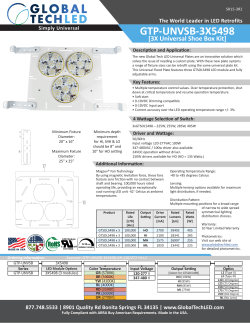
Nondestructive Testing to Detect Delamination Between Plies in
Nondestructive Testing to Detect Delamination Between Plies in Composite Laminated Plates Under Dynamic Loading By: Jason C. Starnes Outline of Study • • • • • • Introduction What I am doing? Why I am doing it? Test process and analysis expected Expectations/hypothesis Questions Introduction • Most common NDT detection methods are visual, ultrasonic, x-ray, tap test, thermography, and Shearography. • Things I wanted to try was using a 3D laser vibrometer, but source fell though. • Plan B, use accelerometer grid over face of plate. What I am doing… • Use nondestructive test methods to detect delamination in [0,90,0,90]s cross-ply composite laminate plates. • 11 plates total, 10 having known delaminated area. • Shaker table will excite plates, while accelerometers will be used to detect delamination. Delamination zones per test specimen. Why I am doing it… • Overtime, composite materials can begin to delaminate starting from small areas and lead to bigger. • Early intervention in determining delamination will aid in cost savings during manufacturing process. • Determine sound FEA analysis model for future use. • Discover new methods to finding delamination's on a small scale. • Interesting. Test Process and Analysis Expected Test Process • Material Properties – M46J/TC250 Unidirectional • Use built vibration fixture • Accelerometers over grid – 3x9 per plate • FEA • Correlate all data Expectations • Degradation in mat. Prop. Comparatively (Exp. Mat.) • Fixture will be well above plate resonance • Painstaking, but worth it • Once process is discovered, should have minimal error • Overall, delamination’s will be found Expectations/Hypothesis • Expectations: – Delamination's will be found. – Modal analysis will correlate • Hypothesis – Will see dampening effect. – FEA will show possible delamination/crack propagation. Manufactured Test Specimens Questions/Comments Thanks
© Copyright 2025











